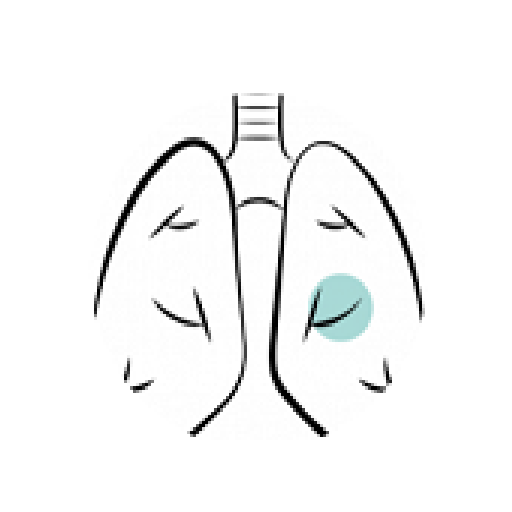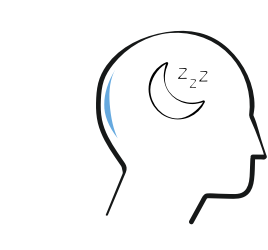
Systemic Scleroderma with ILD (SSc-ILD)
Key facts
- Scleroderma is a rare condition. ILD can occur in patients with scleroderma, which means that the lung tissue might get scarred, making it harder for oxygen to enter the blood, resulting in shortness of breath
- When looking for the correct diagnosis, your healthcare team may perform several tests to get a good understanding of your lung health
- Systemic scleroderma with ILD can get worse over time, but it is not known why some people’s disease progresses faster than others
Scleroderma is a rare multisystem autoimmune disorder that is made up of a group of diseases. There is a localized form that affects the skin, but also a systemic form (SSc) that affects the skin and internal organs, including lungs.
It affects an estimated 1.4–5.6 people per 100,000 each year in North America. Studies have observed that between 35–90% of people who have SSc will develop interstitial lung disease (ILD). ILDs are a group of many different conditions that can be associated with pulmonary fibrosis. They are a challenging group of diseases that affect the interstitium of the lung (the space between the air sacs in the lung) and lead to the formation of scar tissue.
In someone who has scleroderma with ILD, the lungs become scarred, thickened and stiff. This makes it harder for oxygen to enter the blood and results in shortness of breath.
Key facts
- Over 3 times more women than men are affected by systemic scleroderma (SSc)
- 2.5 million people worldwide have scleroderma
- Studies have observed that between 35–90% of people who have SSc develop ILD that affects how they go about their life
How does scleroderma affect the body?
Connective tissue is found throughout the body — it's basically what holds you together. But it's also more than that. It supports, separates and connects different parts of the body. Because scleroderma affects the connective tissue, symptoms can be diverse and occur anywhere in the body.
When a part of your body gets damaged (for example when you are injured), it sets off a natural healing cycle to repair the damage. In scleroderma, the immune system causes the natural healing process to go into overdrive and produce too much collagen. The excess collagen forms hard tissue like scars.
Symptoms of systemic scleroderma with ILD
Many people with SSc-ILD have some form of changes to their lungs. However, not everybody gets noticeable changes.
There are two key ways in which SSc-ILD may affect your lungs:

Interstitial lung disease (ILD) — when the lungs become stiffer and thicker.
ILD happens because fibrosis (scarring) affects the little air sacs in the lungs (the alveoli). Alveoli help transfer oxygen in the lungs into the blood supply and also help to remove carbon dioxide from the blood to be breathed out.

Pulmonary arterial hypertension (PAH) — when the pressure in the blood vessels in the lungs gets too high.
PAH happens because fibrosis (scarring) narrows the small blood vessels in the lungs. This causes the blood pressure to rise in the pulmonary artery (the big blood vessel that carries blood to the lungs), because it is trying to force blood through narrower blood vessels.
The symptoms of scleroderma with ILD and PAH may include:

Shortness of breath

Fits of dry cough

Feeling tired or weak

Chest discomfort or pain

Swollen feet
“I first noticed it at work – I got out of breath if I walked up the stairs.” – person with scleroderma with ILD
Other symptoms more specific to scleroderma in other areas of your body can be found at Scleroderma Canada.
Managing symptoms of systemic scleroderma with ILD
The lung symptoms of scleroderma can affect your quality of life, but there are ways to manage them.
Try to be aware of any little changes that could suggest a lung problem. Check your breath often, especially during normal, everyday activities. If you notice unusual breathing, tell your doctor as soon as you can. The earlier that changes are spotted, the sooner you can be tested and get extra support.

Check your breath often during everyday activities and ensure your lungs are frequently monitored by your doctor — don’t miss check-ups and be sure to tell your doctor right away if you notice changes. Keeping a journal of when you feel short of breath can help identify changes to report.

Smoking is not good for your lungs — ask your healthcare provider for help to stop smoking. They can do a lot to support you.

Try to stay active — simple light exercise will help. Always check with your doctor first and consider making a list of any questions you might have.

Find ways to relax — many lung symptoms can be managed. Consider alternative ways to keep doing the things you love. Talk to your doctor about how your lung symptoms affect you and they can give you advice

Talk to friends and family (and even colleagues) right from the start — they may be able to find ways to help you do what you need or want to do.
These are tests that your doctor might call lung function tests (LFTs) or pulmonary function tests (PFTs) and are used to assess and monitor your lungs.
There are a few different types, and they can involve breathing into tubes in certain ways. The doctor may also listen to the sounds inside your lungs.
- Spirometry and lung volume tests measure the capacity and flow of air into the lungs.
- Pulse oximetry shows the percentage of oxygen in your blood. Normal blood oxygen saturation is around 94–99%.
Your doctor will monitor any changes over time. Regular testing is important because diagnosing respiratory issues early can help you control the lung symptoms of scleroderma and preserve valuable lung function. Unfortunately, once lung function is lost it cannot be regained — making it even more important to remember to check your breath often.
In terms of medication, so far, there is only one treatment authorized for sale in Canada that can help slow the rate of decline in pulmonary function in people with SSc-ILD. Visit the medication page to learn more.
And for advice on how to manage symptoms specific to scleroderma in other areas of your body, please visit Scleroderma Canada.
“In the beginning when you hear...I mean, when you get your diagnosis at the very beginning they say, you have a chronic debilitating progressive disease. That’s where you learn that it’s going to progress, it’s chronic, it’s never going to go away. What does that mean? You start looking up statistics...and you’re thinking, ‘Which statistic am I?’ The first few years it’s very fearful, very scary. Until you realize that some of these dire things are probably not going to happen, and if they do we’ll deal with them, and we have good medical care.” – Lilly, BC
(@ 8 years post-diagnosis)*
SSc-ILD can become progressive, which means that it might get worse over time. However, there is no way of predicting if or how fast this will happen. Some patients might not have changes in their symptoms, while other patients might experience a faster worsening of their symptoms. It is not known why some people’s disease progresses faster than others.
“I now see my doctors as more of my team that are helping me to live with it. Rather than, in the beginning it was always really scary to go to them, because they were always telling me something new. They were always telling me something had changed. This is a new symptom. These were things that were…because it was progressing fairly quickly in the beginning. You don’t know, is that going to just keep going? Is it going to get worse? Am I going to level off and have this level of function for however long I have? I feel like in the beginning, the doctors it was more scary, and much more official if that makes sense. Now it’s more like, I’m going back and chatting with people who know me. We have more of a relationship, and it’s more a teamwork, and they’re listening to what I’m saying as well. I’m responsible for some of my own health. I can tell them what I’m doing, how I’m being active, and those kinds of things.” – Lilly, BC
(@ 8 years post-diagnosis)*
* Name has been changed for privacy.


